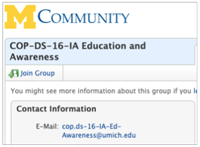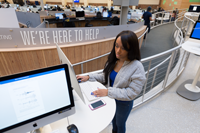The ITS Identity and Access Management team is working to expand the use of the Identity Governance tool, which is used to automate the process of granting and revoking access to digital and physical resources. Access procedures and requirements vary widely across different units and systems, so ITS works closely with each unit to understand their needs and design solutions using the new tool.
ITS is working with the Registrar’s Office for access to M-Pathways Student Administration and with the Office of Undergraduate Admissions for access to Slate, a new admissions management tool. ITS also continues to work with the three units that first adopted the new automated access tool to improve its effectiveness.
The Identity Governance tool puts into practice the concept of role-based access control, which is to automatically assign people access to digital and physical resources based on their roles in an institution. This type of pre-approved access can be assigned to employees, changed, and removed based on their current positions. For example, if an employee changes positions, their access could automatically be adjusted in response to the job change.
Role-based access accelerates the start-up time for new employees who need access to systems and improves data security by promptly removing access when a person’s status changes. It also replaces some manual processes, increases the ability to track and report on access, and makes it easier for the right people to get access to the right U-M resources when they need them.
If your unit is interested in learning more about implementing the Identity Governance tool, contact the team by emailing [email protected]. Requests will be prioritized and evaluated based on several factors, such as the benefits in relation to the amount of work involved in the transition process.
Visit Identity Governance to learn more about the features and benefits of the tool.














